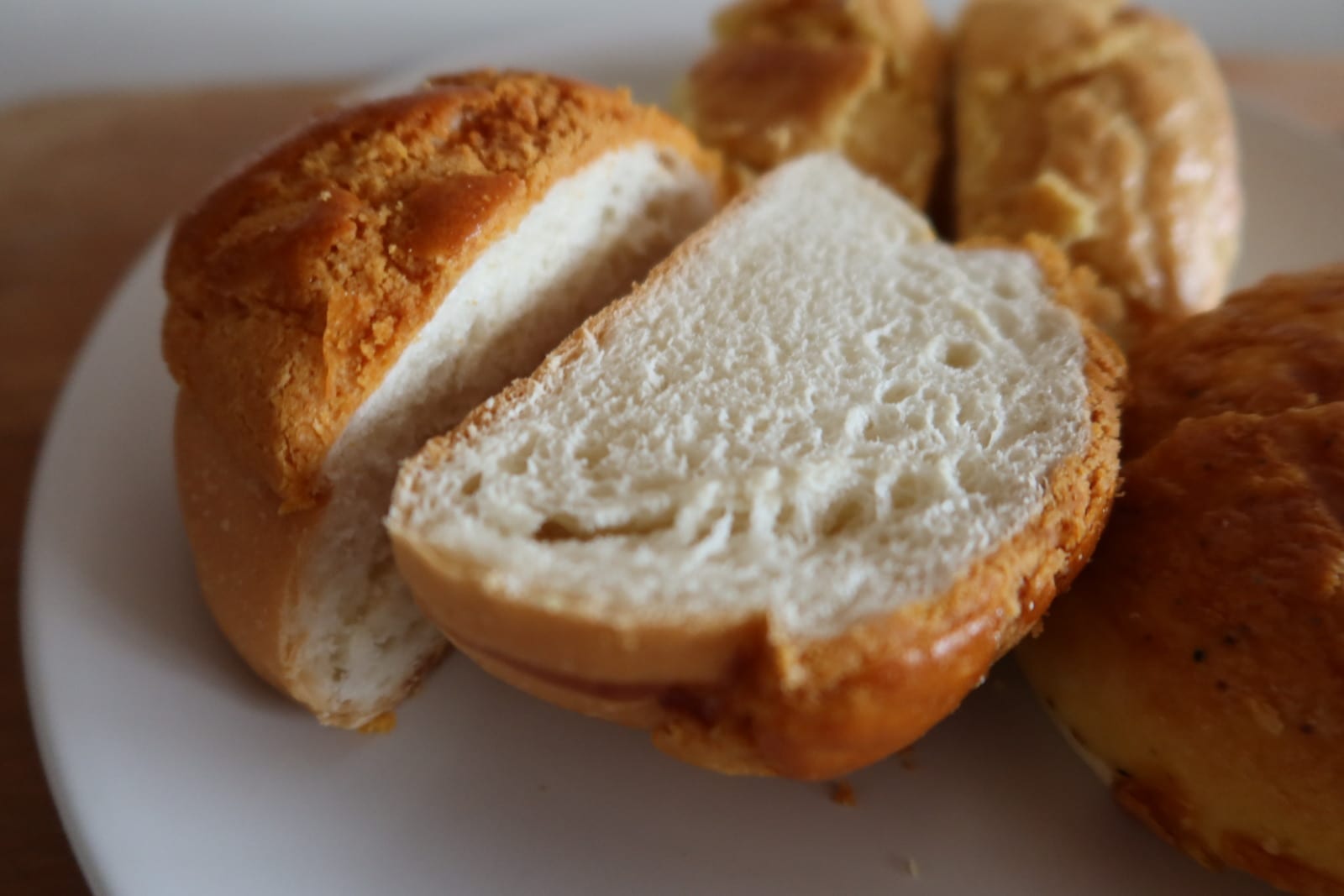Header photo credit: Party Lin, Creative Commons 2.0 via Wikimedia Commons
What is a pineapple bun?
The pineapple bun (bolo bao; 菠蘿包) is a soft baked bun with a characteristic cracked yellow or golden topping. This mixed-texture bun does not contain any pineapple or pineapple flavouring, however, and the name comes from the topping’s visual resemblance to the tropical fruit. The sweet crust is traditionally made with lard (but now usually with butter), sugar, egg yolk and flour and is rolled and draped on top of the bun prior to baking, resulting in a crumbly, golden crust that contrasts with the light, airy bao underneath.

This popular bun can be found at bakeries and local cafés in shades of yellow, gold or brown, and its size varies too – but no matter which shade or size, fresh from the oven is always preferred. The best pineapple bun should sport a crispy crown that does not easily fall off.
At cafés, the pineapple bun is most often served warm with a thick slice of cold butter in the middle (bolo yau; 菠萝油) alongside a cup of Hong Kong’s famous milk tea. Additional variations include versions with custard, coconut, red bean or char siu fillings.
Did you know…?
- In 2014, the Hong Kong Government recognised the pineapple bun-making technique as a valuable traditional craftsmanship skill, listing it in the Intangible Cultural Heritage Inventory of Hong Kong.
- First appearing in the 1940s, the precise origin of the pineapple bun is unknown. Its history might be tied to that of its cousin, the Mexico bun, thought to have been developed around the same time by Chinese Mexicans as a tribute to the concha, a sweet Mexican bread.
- Many recipes call for ammonia powder, which results in an extra-cracked and crispy topping owing to the crystallisation properties of the powder. Edible ammonia powder has a powerful and unpleasant aroma, but this evaporates when used in dry baking.
- In Hong Kong, there’s a popular cartoon character called McDull, and he appears in the 2004 film McDull, Prince de la Bun (菠蘿油王子 – the literal translation is “the prince of the pineapple bun with butter”). His cap is a chequered pineapple bun topping, complete with a crown resembling golden butter.
- In 2005, “Pineapple Bun” was nominated as the name of a typhoon, but the Hong Kong Observatory was concerned that the typhoon would not be taken seriously, rejecting the name.
RELATED: The Four Heavenly Kings of Dim Sum
Famous pineapple buns to try

Photo credit: Dennis Wong, Creative Commons 2.0 via Wikimedia Commons
You can find pineapple buns at traditional bakeries all around Hong Kong, as well as at local cafés (known as cha chaan teng or bing sutt ). Here are the top three most memorable bolo bao to try:
Kam Fung Cafe, Wanchai
A visit to Kam Fung for a warm pineapple bun with a slab of cold butter will likely have you join the chorus singing high praise for this HK-style teahouse.
41 Spring Garden Lane, Wanchai, 2572 0526
Kam Wah Cafe, Mongkok
Arguably the most well-known spot in Hong Kong for a butter-laden pineapple bun, Kam Wah has been serving its signature pineapple bun since 1973. The egg tart here is recommended too.
45–47 Bute Street, Mongkok, 2392 6830
Tim Ho Wan, across Hong Kong
Rising to prominence in 2010 as “the most affordable Michelin-starred restaurant in the world”, Tim Ho Wan offers a char siu bao in the style of a pineapple bun. With its characteristic cracked yellow topping, the bun is stuffed with BBQ pork for a sweet and savoury hit.
RELATED: One last visit to Hong Kong’s Hoi On Cafe before the bing sutt closed
For more articles like this, like Foodie on Facebook

